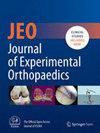3D printing technology is a more accurate tool than an experienced surgeon in performing femoral bone tunnels in multi-ligament knee injuries
Abstract
Purpose
Current surgical methods for multi-ligament knee reconstruction involve the creation of several reconstruction tunnels in the distal femur. However, the limited bone mass in the knee increases the risk of tunnel convergence. Increasing the accuracy of tunnel direction can minimize tunnel collision during anatomical reconstruction. 3D-printed patient-specific instrumentation (PSI) has gained prominence in orthopaedic surgery due to its precision. This study aims to compare the accuracy of PSI with that of the ‘freehand’ approach by an experienced surgeon for drilling the medial and lateral femoral tunnels while adhering to the recommended angulations for multi-ligament knee injuries.
Methods
Ten cadaveric knees underwent computerized tomography (CT) scans to identify anatomical femoral attachments of the lateral collateral ligament (LCL), popliteal tendon (PT), medial collateral ligament (MCL) and posterior oblique ligament (POL). Using Materialise Mimics Medical v25.0 software, virtual planning of a bone tunnel for each ligament was performed, and a total of four tunnels per knee were obtained. Ten PSIs were designed for five knees: five for the medial side and five for the lateral side. The first five knees were operated on via PSI, and the other five knees were operated on by an experienced surgeon using freehand drilling based on preoperative plans. The angular deviation and entry point were assessed by overlaying post-operative CT images onto preoperative CT images.
Results
In the freehand group, the median angular deviation was 22.3°, with an interquartile range (IQR) of 17.6–25.2°. The PSI group presented a significantly greater accuracy in angular deviation for femoral tunnels of 5.7°, with an IQR of 4–8.2° (p < 0.001). Compared with that in the preoperative planning group, the median entry point distance in the freehand group was 5.5 mm, with an IQR of 2.6–8.8 mm. The PSI group had a median entry point distance of 4.2 mm, with an IQR of 3.6–5.7 mm (p = n.s).
Conclusions
Compared with the freehand technique performed by an experienced surgeon, PSI demonstrated significantly greater accuracy in terms of the mean angular deviation.
Level of Evidence
Level V.


 求助内容:
求助内容: 应助结果提醒方式:
应助结果提醒方式:


